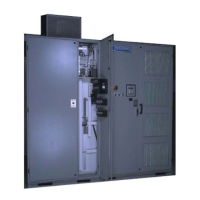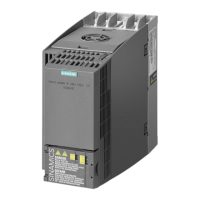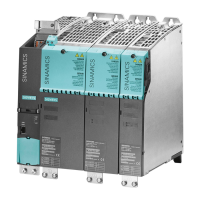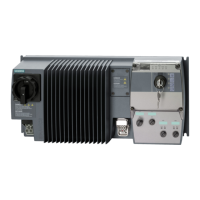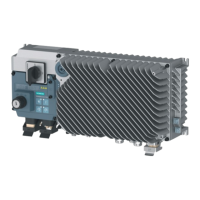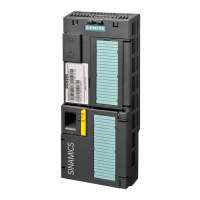8.5 Speed Droop
Speed droop is the decrease in the speed of a motor with a constant voltage and frequency when
the motor is under load. The dierence between the synchronous (unloaded) speed of the motor
and the full load speed is known as slip. Normally, slip compensation increases the output
frequency of the VFD as the motor speed attempts to decrease. This compensation maintains a
constant motor speed by minimizing droop. However, in some applications, droop is needed.
Applications requiring Speed Droop
Speed droop is used in systems that are mechanically coupled to accomplish current (load)
sharing. Speed droop works for controlling current sharing with multiple drives in parallel with
a single motor, or for sharing load between multiple motors with separate drives e.g. large
conveyors or rock crushers, that are mechanically coupled to the same load. Speed droop shares
the load or current by decreasing the speed demand slightly as load increases. Equilibrium is
reached when the load is evenly shared between drives and/or motors.
0RWRU6SHHG
7RUTXH
&XUUHQW
5HIHUHQFH
6SHHG
'URRS
*DLQ
6SHHG
5DPS
6SHHG
5HJXODWRU
6SHHG
5DPS
2XWSXW
6SHHG
5HIHUHQFH
6SHHG
5DPS
,QSXW
0HDVXUHG
7RUTXH
&XUUHQW
Figure 8-1 Speed Droop
This function is linear and the amount of droop is directly proportional to the load (torque)
current. The droop is applied across the entire speed range.
Setting Parameter for Speed Droop
Refer to the Speed Loop Menu (3200) in Section Options for Stability Menu (3) of
Chapter Parameter Assignments / Addressing for the parameter associated with this function:
• Speed droop (3245)
Parameter settings for this function are application dependant. The default is zero or
disabled.
Advanced Operating Functions
8.5 Speed Droop
NXGPro+ Control Manual
238 Operating Manual, A5E50491925A
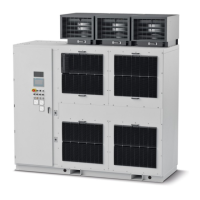
